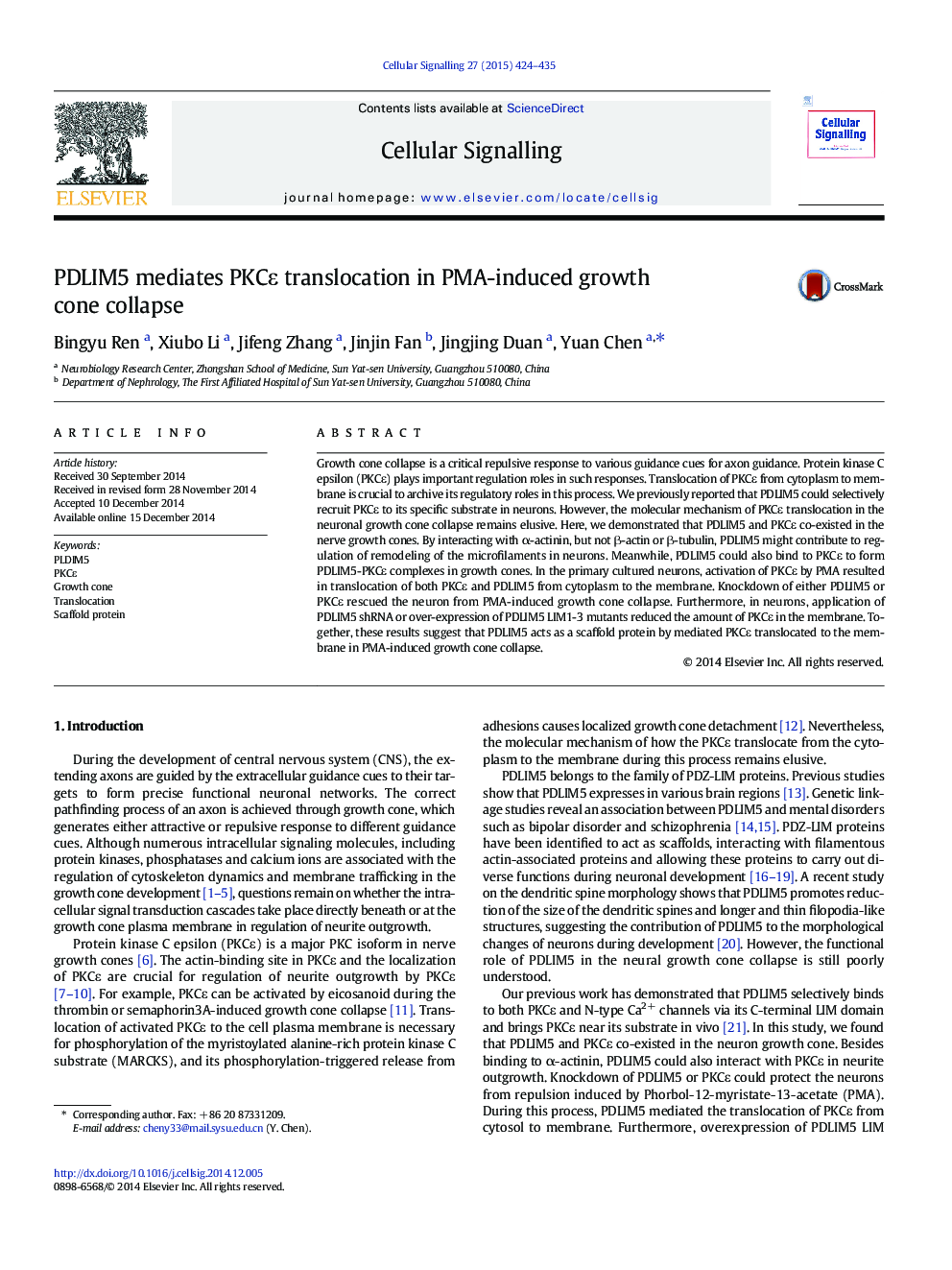| Article ID | Journal | Published Year | Pages | File Type |
|---|---|---|---|---|
| 10815927 | Cellular Signalling | 2015 | 12 Pages |
Abstract
Growth cone collapse is a critical repulsive response to various guidance cues for axon guidance. Protein kinase C epsilon (PKCε) plays important regulation roles in such responses. Translocation of PKCε from cytoplasm to membrane is crucial to archive its regulatory roles in this process. We previously reported that PDLIM5 could selectively recruit PKCε to its specific substrate in neurons. However, the molecular mechanism of PKCε translocation in the neuronal growth cone collapse remains elusive. Here, we demonstrated that PDLIM5 and PKCε co-existed in the nerve growth cones. By interacting with α-actinin, but not β-actin or β-tubulin, PDLIM5 might contribute to regulation of remodeling of the microfilaments in neurons. Meanwhile, PDLIM5 could also bind to PKCε to form PDLIM5-PKCε complexes in growth cones. In the primary cultured neurons, activation of PKCε by PMA resulted in translocation of both PKCε and PDLIM5 from cytoplasm to the membrane. Knockdown of either PDLIM5 or PKCε rescued the neuron from PMA-induced growth cone collapse. Furthermore, in neurons, application of PDLIM5 shRNA or over-expression of PDLIM5 LIM1-3 mutants reduced the amount of PKCε in the membrane. Together, these results suggest that PDLIM5 acts as a scaffold protein by mediated PKCε translocated to the membrane in PMA-induced growth cone collapse.
Related Topics
Life Sciences
Biochemistry, Genetics and Molecular Biology
Biochemistry
Authors
Bingyu Ren, Xiubo Li, Jifeng Zhang, Jinjin Fan, Jingjing Duan, Yuan Chen,
